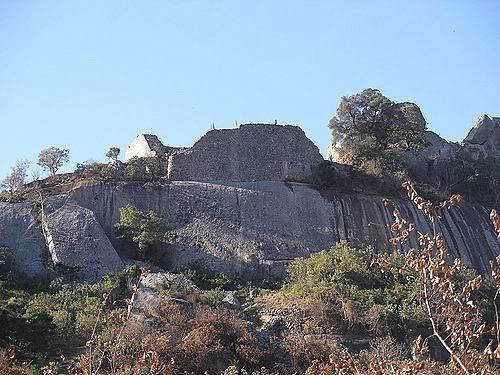Government Monarchy Abandonment of Mapungubwe for Zimbabwe 1220 Founded 1220 | Mambo Rusvingo (first) Zimbabwe conquest of Mutapa 1430 Date dissolved 1450 | |
 | ||
The Kingdom of Zimbabwe (c. 1220–1450) was a medieval kingdom located in modern-day Zimbabwe. Its capital, Great Zimbabwe, is the largest stone structure in precolonial Southern Africa.
Contents
Name
Zimbabwe is the modern name issued to the most prominent pre-colonial civilization in southern Africa. The name is derived from one of two possible terms: the Shona (dzimba dza mabwe or "great stone houses") or Kalanga (Nzi we mabwe or "Homestead of Stone").
Origin
Although the Kingdom of Zimbabwe was formally established during the medieval period, archaeological excavations in the region suggest that state formation here was considerably more ancient. In 1901, south of the Zambezi in the northwestern Shona (Makalanga) area, a ceramic ushabti was exhumed and presented to Carl Peters. According to Flinders Petrie, who subsequently examined the mortuary figurine, it had a cartouche on its chest that belonged to the 18th Dynasty Egyptian Pharaoh Thutmose III. In Petrie's estimation, this royal inscription and other regalia on the artefact confirmed that the object was a genuine ancient statuette of the king himself. The ushabti's burial further appeared to represent proof of commercial ties between rulers in the area and the ancient Egyptians during the New Kingdom (c. 1550 BC–1077 BC), if not a relic of an old Egyptian station near the local gold mines. Johann Heinrich Schäfer later appraised the statuette, and argued that it belonged to a well-known group of forgeries. After having received the ushabti, Felix von Luschan suggested that it was of more recent origin than the New Kingdom. He asserted that the figurine instead appeared to date to the subsequent Ptolemaic era (c. 323 BC–30 BC), when Alexandria-based Greek merchants would import Egyptian antiquities and pseudo-antiquities into southern Africa.
In the early 11th century, people from the Kingdom of Mapungubwe in Southern Africa are believed to have settled on the Zimbabwe plateau. There, they would establish the Kingdom of Zimbabwe around 1220. 16th century records left by the explorer João de Barros indicate that Great Zimbabwe appears to have still been inhabited as recently as the early 1500s.
Culture and expansion
The rulers of Zimbabwe brought artistic and stonemasonry traditions from Mapungubwe. The construction of elaborate stone buildings and walls reached its apex in the kingdom. The institution of mambo was also used at Zimbabwe, along with an increasingly rigid three-tiered class structure. The kingdom taxed other rulers throughout the region. The kingdom was composed of over 150 tributaries headquartered in their own minor zimbabwes. They established rule over a wider area than the Mapungubwe, the Butua or the Mutapa.
Economy
The Kingdom of Zimbabwe controlled the ivory and gold trade from the interior to the southeastern coast of Africa. Asian and Arabic goods could be found in abundance in the kingdom. Economic domestication, which had been crucial to the earlier proto-Shona states, was also practised. The Great Zimbabwe people mined minerals like gold, copper and iron. They also kept livestock, as it is explained by its theory of cattle hypothesis.
Rise of Mutapa and decline of Zimbabwe
In approximately 1430 prince Nyatsimba Mutota from the Great Zimbabwe travelled north to the Dande region in search of salt. He then defeated the Tonga and Tavara with his army and established his dynasty at Chitakochangonya Hill. The land he conquered would become the Kingdom of Mutapa. Within a generation, Mutapa eclipsed Great Zimbabwe as the economic and political power in Zimbabwe. By 1450, the capital and most of the kingdom had been abandoned.
Aftermath
The end of the kingdom resulted in a fragmenting of proto-Shona power. Two bases emerged along a north-south axis. In the north, the Kingdom of Mutapa carried on and even improved upon Zimbabwe's administrative structure. It did not carry on the stone-masonry tradition to the extent of its predecessor. In the south, the Kingdom of Butua was established as a smaller, but nearly identical, version of Zimbabwe. Both states were eventually absorbed into the largest and most powerful of the Kalanga states, the Rozwi Empire.
